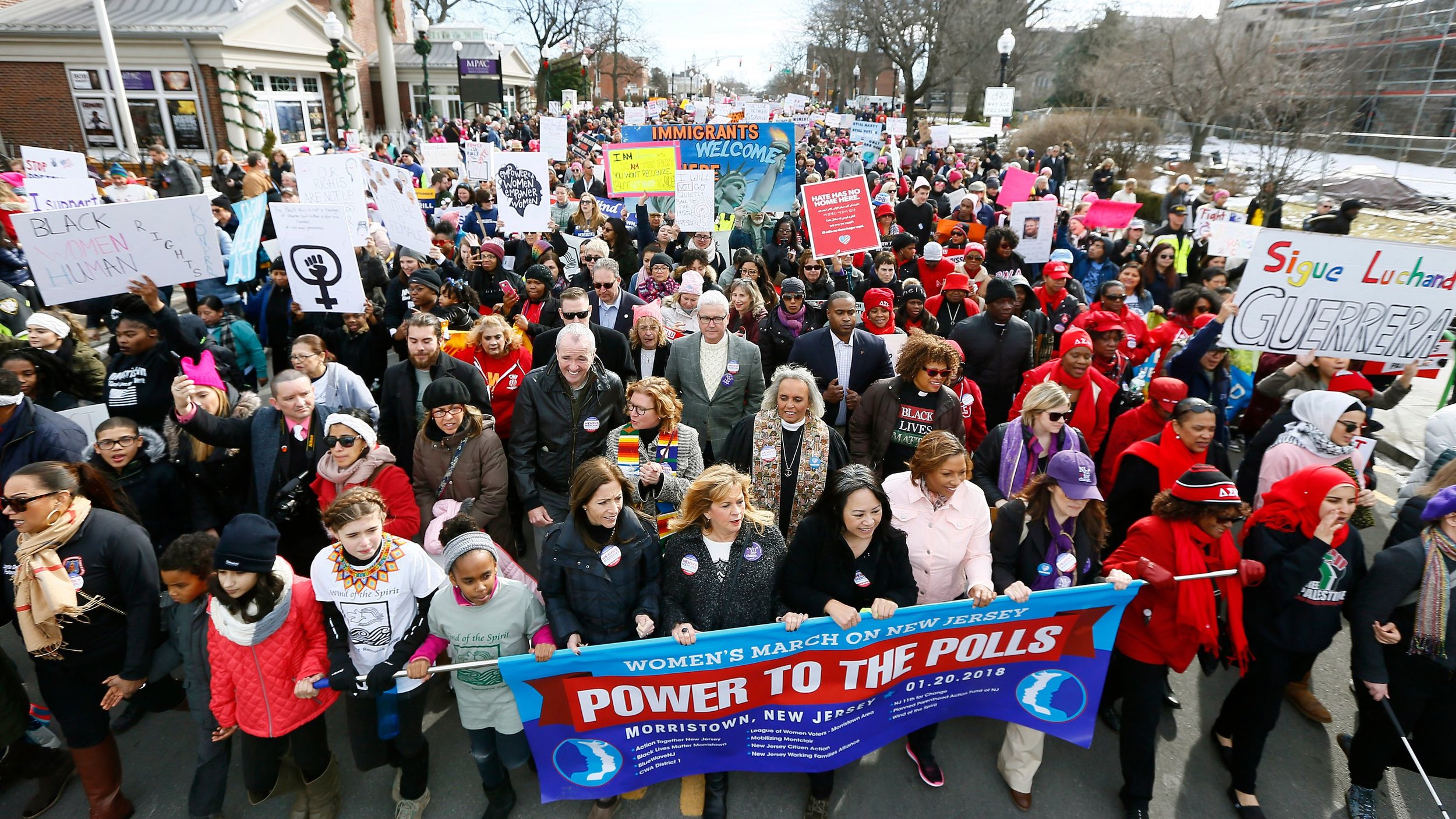Women's March: From 4 Million Marchers to 125,000
Over four million women and allies marched around the world in the inaugural January 2017 Women’s March. Unfortunately, the 2019 edition did not mirror the past march’s success. A meager 125,000 people participated this year. The march began as a protest to Donald Trump taking Presidential office before erupting into a worldwide movement of action. Resistance was the group’s initial plan but it quickly turned into a platform for the organization’s unity principles: ending violence, promoting reproductive rights, LBTQIA rights, workers’ rights, civil rights, disability rights, immigrant rights, and environmental justice. These principles helped to propel the movement from a one-time event to an organization that has spawned various programming and forms of activism before being rocketed by reports of antisemitism.
Vanessa Wruble was inspired by the Jewish value of Tikkun Olam, repair the world, to create a protest event based on the 2016 election results. She posted her idea in a Facebook group where she was challenged by Tamika Mallory and Carmen Perez about Jews confronting their own role in racism. The trio went on to create the largest protest in American history in 2017.
After the 2017 march, Wruble was pushed out of the organization. She believes her Jewish identity played a role in her exit. Upon leaving the organization, she founded March On, a group that supports local women activists. March On held marches during the Women’s Marches this year.
The Forward released an expose of Malloy’s involvement with an anti-semitic leader after suspicions rose following Vanessa Wruble’s step down. Following the report’s release, supporters of the Women’s March have been grappling with Tamika Malloy’s anti-semitic history in recent months.
Tamika Mallory has been heavily criticized for attending the Nation of Islam’s Saviours’ Day event by Louis Farrakhan, the leader of the Nation of Islam. Farrakhan is known for making anti-Semitic comments. Mallory tweeted Mr. Farrakhan is “the GOAT.” At the event, Farrakhan said “powerful Jews are my enemy.” He has endorsed a multitude of anti-Semitic conspiracy theories. Mallory posted a video of the event to Instagram, which caused her attendance to attract so much attention. The ADL reported Farrakhan mentioned Mallory in his speech at the event.
The Women’s March reacted to wide criticism by releasing a statement that “Minister Farrakhan’s statements about Jewish, queer, and trans people are not aligned with the Women’s March Unity principles. The world Women’s March seeks to build is one free from anti-Semitism, homophobia, transphobia, sexism, racism, and all forms of social violence.”
Many called for Mallory to cut ties with Farrakhan but Mallory resisted. She said, “where my people are is where I must be. Even though I can condemn Farrakhan for the crazy nonsense and the racist stuff and the bizarre stuff he says, I can also acknowledge that the Nation did great things when they were really needed.”
Many Jewish women felt uncomfortable participating in a march where a key leader identifies with the Nation of Islam movement. While some opted to participate, a large percentage of the Jewish population were uncomfortable with the march. Jewish supporters opted to not participate in the annual event.
The first Women’s March was a major success with one percent of the US population participating. While the second event was large, it pales in comparison to the first. This year’s edition struggled from reports of anti-Semitism and bad weather. In order for the movement to continue as a driving force behind change, the organization must separate itself from its antisemitic roots.
By Sophie Kieffer


